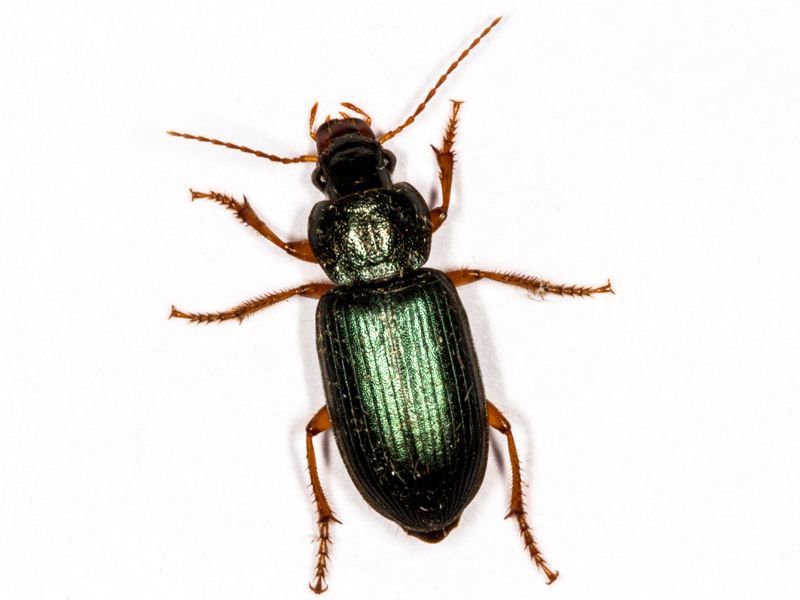Ophonus ardosiacus
There don't seem to be all that many records of this species in Norfolk but as I've found it at three sites I assume it isn't all that unusual.
I had a slight wobble keying this to genus when using Hackston's key when it comes to assessing the hairs on the head, because for the choice that leads to Ophonus (and Scybalicus) it says that the hairs tend to lie on the surface. On this beetle the hairs were very clearly erect and not lying on the surface at all, but they were covering pretty much the whole head which they shouldn't for the alternative (Harpalus). Duff's key doesn't require the hairs to be erect, but just to make quite sure I hadn't gone wrong I also ran it through the Harpalus key and quickly reached a dead-end.
Unlike e.g. Harpalus rufipes, the hairs on the elytra were quite hard to see being dark, but they covered the whole elytra. In life the beetle had strong green reflections on the elytra - under the microscope they look bluer. The length of the beetle was about 11.5mm.
 (1).jpg)
 (2).jpg)
 (3).jpg)
Ophonus ardosiacus showing hairs on head and base of pronotum & elytra, Wendling Beck Environment Project (Norfolk, UK), 9th August 2023
This one came to light at a different site within the same project area a couple of nights later. Like the last, the hairs on the head were erect so using Hackston to key it ran into problems, but once past that it was straightforward enough. It was about 11.25mm long.
 (1).jpg)
Ophonus ardosiacus, Wendling Beck Environment Project (Norfolk, UK), 11th August 2023
This one was in my garden moth trap. When I examined the specimen the elytra was dull-metallic blue, quite different from the bright-metallic green it looks in the photo. My notes suggest it looked green in life though there's a possibility this was influenced by me looking at it through the camera lens.

Ophonus ardosiacus, North Elmham (Norfolk, UK), 5th August 2024
As noted above, I had had problems before with how the genus key describes the head hair when looking at this species, but in this case it was worse. There were lots of short hairs at the front of the head and a row of hairs above the eye, but otherwise the top of the head was punctured but entirely lacking in hair. I was pretty sure it was nevertheless going to be Ophonus, and indeed the keys failed I attempted to key it as one of the other hairy Harpalini genera. It came to light. My live photo is dreadful but I managed to open the dried specimen's legs out without breaking them so was able to get better photos of it dead.
 (1).jpg)
 (2).jpg)
 (3).jpg)
 (4).jpg)
 (6).jpg)
Ophonus ardosiacus, North Elmham (Norfolk, UK), 18th July 2025
